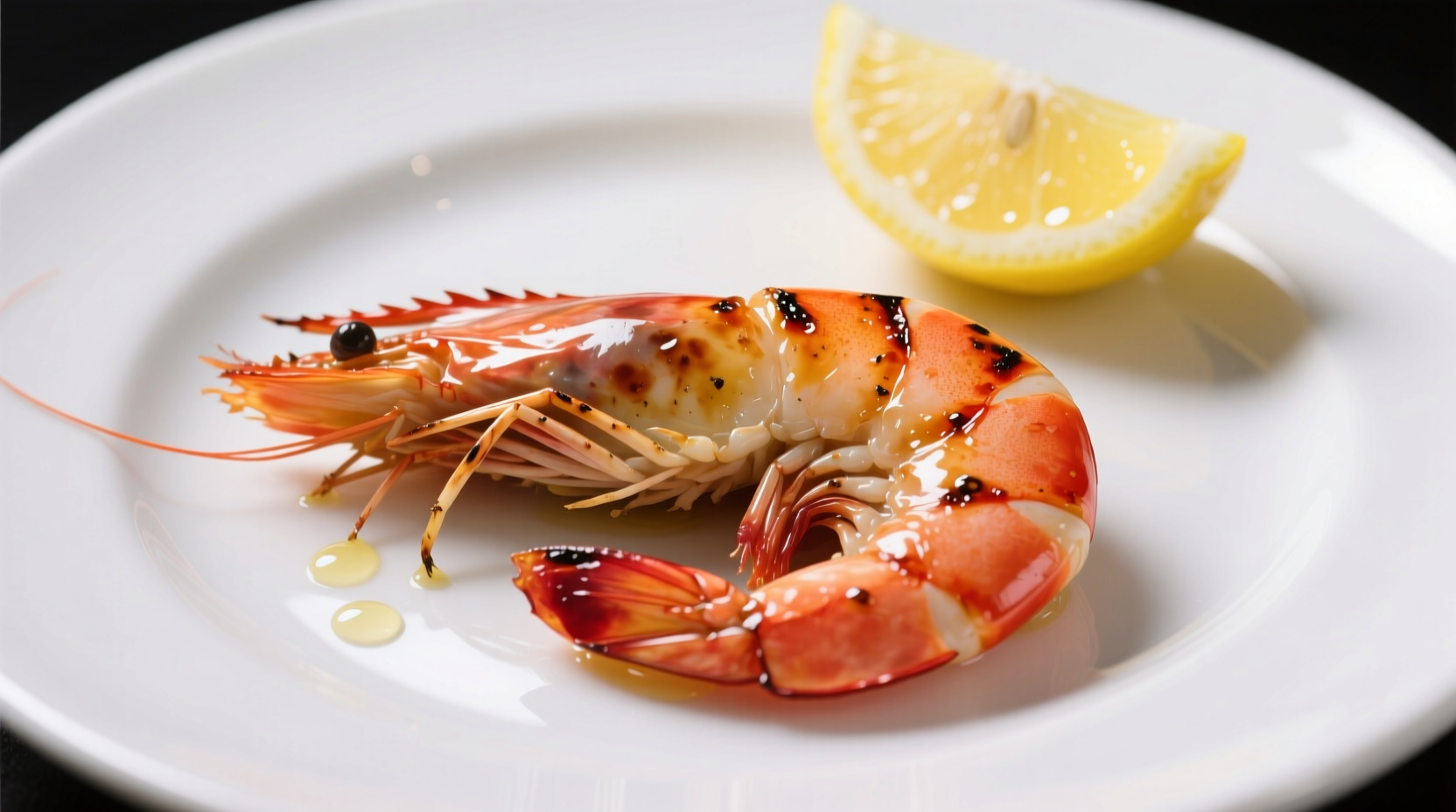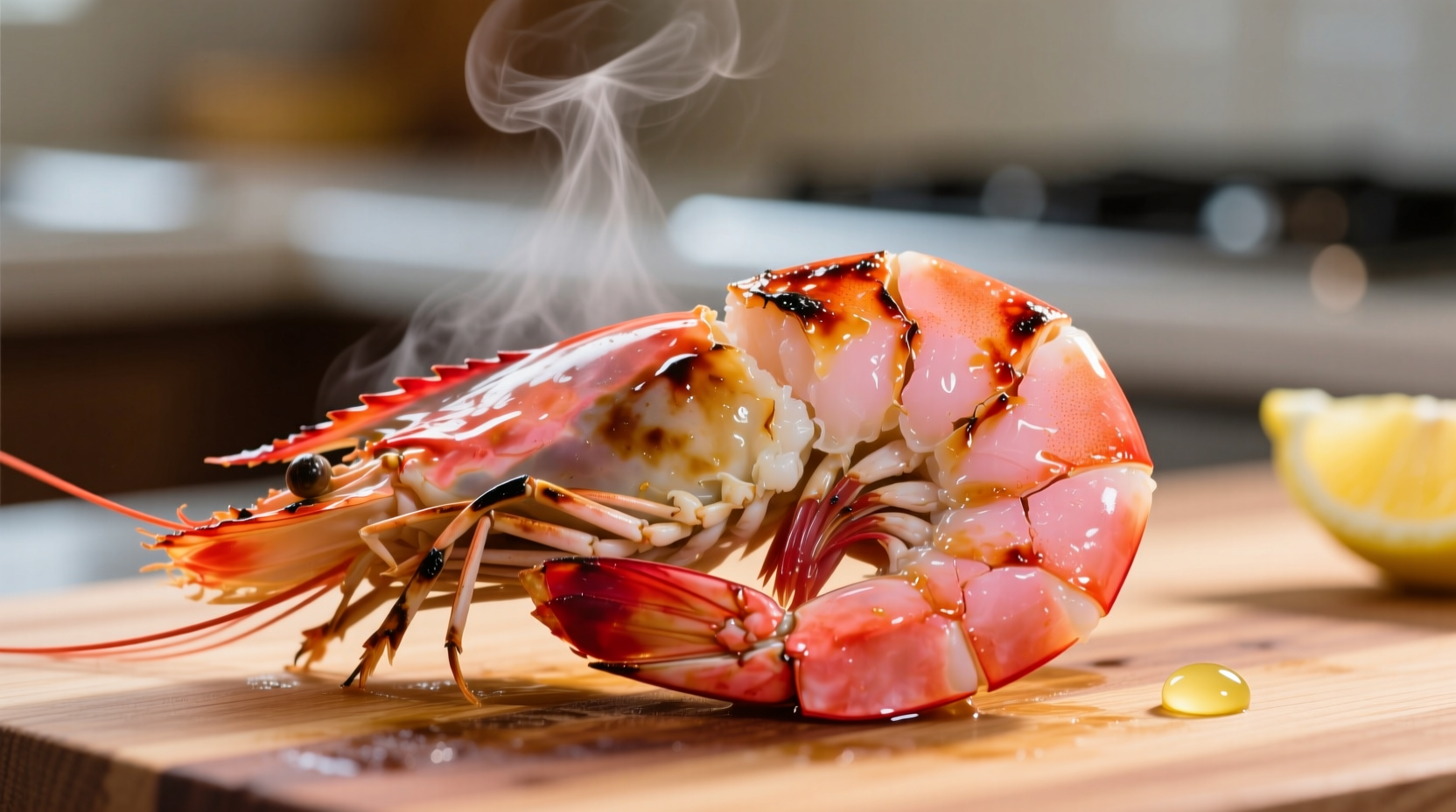The Essential Flavor Profile of Fresh Shrimp
When properly prepared, shrimp delivers a clean, mildly sweet taste that's neither overpowering nor bland. The delicate flavor contains subtle oceanic notes without excessive fishiness, making it versatile for various cuisines. Unlike stronger seafood like mackerel or anchovies, shrimp's gentle profile allows it to absorb complementary flavors while maintaining its distinctive character.
Food scientists identify specific compounds responsible for shrimp's characteristic taste. According to research published in the Journal of Food Science, shrimp contains naturally occurring glutamate and inosinate compounds that create a pleasant umami sensation. This explains why properly cooked shrimp feels satisfying and complete without needing excessive seasoning.
Texture's Role in Flavor Perception
Shrimp's texture significantly influences how we perceive its taste. Fresh, properly cooked shrimp should be:
- Firm yet yielding to the bite
- Slightly springy (not rubbery)
- Moist without being watery
- Delicate enough to cut with a fork
Overcooked shrimp becomes tough and rubbery, which many people mistake for a 'fishy' flavor. The U.S. Food and Drug Administration confirms that proper cooking preserves both texture and optimal flavor development in shellfish.
Factors That Transform Shrimp's Taste
Several elements affect shrimp's final flavor profile:
| Factor | Impact on Flavor | Best Practice |
|---|---|---|
| Species | White shrimp: mild sweetness; Rock shrimp: nuttier flavor; Pink shrimp: brinier taste | Select based on recipe requirements |
| Habitat | Wild-caught: more complex flavor; Farmed: milder, more consistent taste | Check origin labels when purchasing |
| Freshness | Fresh: clean ocean scent; Spoiled: ammonia odor | Use within 1-2 days of purchase |
| Cooking Method | Grilled: smoky notes; Steamed: pure shrimp flavor; Fried: richer texture | Match method to desired flavor profile |
How Cooking Methods Alter Shrimp's Taste
The transformation during cooking significantly impacts shrimp's final flavor. When heated, the Maillard reaction creates new flavor compounds while the shrimp's natural sugars caramelize slightly. Different techniques yield distinct results:
- Raw (sashimi-grade): Purest expression of shrimp's natural sweetness with clean ocean notes
- Steamed: Preserves delicate flavor while enhancing natural sweetness
- Grilled: Adds smoky complexity that complements rather than overwhelms
- Sautéed: Quick cooking maintains tenderness while allowing flavor absorption
- Fried: Creates textural contrast that concentrates flavor in the interior
The National Academies of Sciences, Engineering, and Medicine notes that proper cooking temperature (145°F internal) preserves optimal flavor compounds while ensuring food safety.

Perfect Pairings for Shrimp's Flavor Profile
Understanding shrimp's taste characteristics helps create balanced dishes. The mild sweetness pairs beautifully with:
- Citrus elements: Lemon or lime enhances natural sweetness without overpowering
- Herbs: Dill, parsley, and cilantro complement without dominating
- Garlic: Adds savory depth that works with shrimp's umami notes
- White wine: Acidity cuts through richness while enhancing subtle flavors
- Spices: Paprika, cayenne, or Old Bay provide complexity without masking
Avoid overly aggressive flavors that can overwhelm shrimp's delicate profile. The Culinary Institute of America's research shows that shrimp's flavor compounds are volatile and easily dominated by stronger ingredients.
Common Misconceptions About Shrimp Flavor
Several myths persist about shrimp's taste:
- "All shrimp tastes fishy" - Properly handled fresh shrimp should have minimal fishiness
- "Frozen shrimp can't taste good" - IQF (individually quick frozen) often preserves quality better than 'fresh' thawed shrimp
- "Shrimp should be bland" - Quality shrimp has distinctive flavor that needs minimal enhancement
- "The vein affects taste" - The digestive tract primarily affects texture, not flavor
When evaluating shrimp quality, focus on firm texture, clean ocean scent (not ammonia), and translucent appearance in raw shrimp. These indicators matter more than taste alone for determining freshness.
Regional Flavor Variations You Should Know
Shrimp's taste varies globally based on local conditions. Wild shrimp from different regions develop distinctive flavor profiles due to their natural diets and water conditions:
- Gulf of Mexico shrimp: Slightly sweeter with nutty undertones from abundant plankton
- Atlantic coast shrimp: Cleaner, more delicate flavor from colder waters
- Tropical Pacific shrimp: Brinier profile with subtle mineral notes
- Farmed shrimp (various regions): Milder, more consistent flavor influenced by feed composition
The Food and Agriculture Organization of the United Nations documents these regional variations in their Global Review of Shrimp Fisheries, noting how local ecosystems directly impact flavor development.











 浙公网安备
33010002000092号
浙公网安备
33010002000092号 浙B2-20120091-4
浙B2-20120091-4